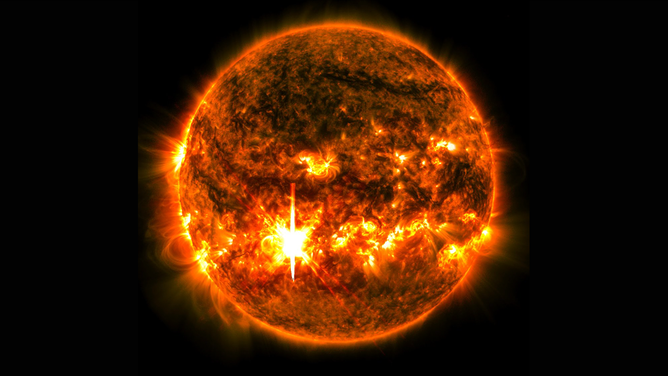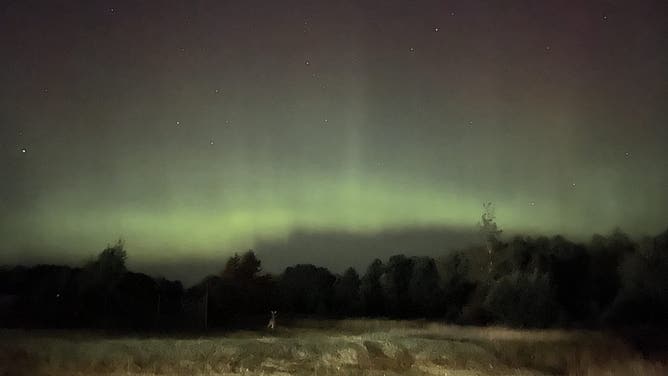Second-strongest solar flare of cycle could trigger Northern Lights across US
NOAA's space weather forecasters issued a Geomagnetic Storm Watch on Wednesday, with impacts arriving beginning Thursday. A period of G3 "strong" geomagnetic storming conditions is possible on Friday, with the potential for Northern Lights displays across the Northern U.S. and farther south.
Know Your FOX Weather: Northern Lights
FOX Weather meteorologist Stephen Morgan breaks down the Northern Lights and how you can see them.
UPDATE: The Sun emitted an X9.0 solar flare on Thursday, and its impacts on Earth are still being determined. Click here to follow the latest on this story.
PREVIOUS STORY
Vivid displays of the Northern Lights are possible across the Northern and Midwestern U.S. later this week after the Sun released its second-strongest solar flare in more than a decade.
A satellite observed a strong X7.1 solar flare blasting material from the Sun on Wednesday, the second-strongest flare of Solar Cycle 25, only after the May 14 flare, which was an X8.7, according to NOAA’s Space Weather Prediction Center (SWPC). The Sun is currently approaching solar maximum in Solar Cycle 25, an 11-year period of activity with a crescendo of activity marked by more sun spots, which can lead to solar flares and more space weather events.
An X flare is the most intense, and the number represents its strength. While the Sun produces these bursts of energy frequently, flares of this magnitude are not common.
NASA's Solar Dynamics Observatory (SDO) spacecraft recorded the flare in the photo below.

An X7.1 solar flare seen by NASA's SDO spacecraft on Oct. 1, 2024.
(NASA)
After the solar flare on Monday, the SWPC has been monitoring for possible coronal mass ejection impacts directed toward Earth. After two days of watching, it appears the associated CME will have impacts on parts of the planet.
SWPC issued a Geomagnetic Storm Watch on Wednesday, with impacts arriving beginning Thursday. A period of G3 "strong" geomagnetic storming conditions is possible on Friday.
The SWPC rates solar storms on a five-level scale, with five being the most extreme and rarest space weather conditions. These stronger geomagnetic storms are less common than G1 or G2 events. However, Earth experienced near-global auroras in May, even as far south as Florida, when an "extreme" (G5) geomagnetic storm occurred because of two groups of extremely active sunspots.

The National Weather Service in Marquette, Michigan, shared this dazzling display of Northern Lights taken around 4:30 a.m. ET Thursday morning, Sept. 12, 2024.
(NWS Marquette / X / FOX Weather)
A geomagnetic storm happens when a barrage of electrons smashes into Earth following a solar event like a coronal mass ejection. These interactions can cause problems with the power grid and satellites, but the public does not need to worry. A positive consequence of a solar storm is that these electrons interact with particles in Earth’s magnetic field, creating vivid displays known as the Aurora Borealis, also known as the Northern Lights.
With the current strong geomagnetic storm forecast on Friday, displays of auroras could be visible in areas as far south as Illinois and Oregon, depending on the cloud cover and viewing conditions.
